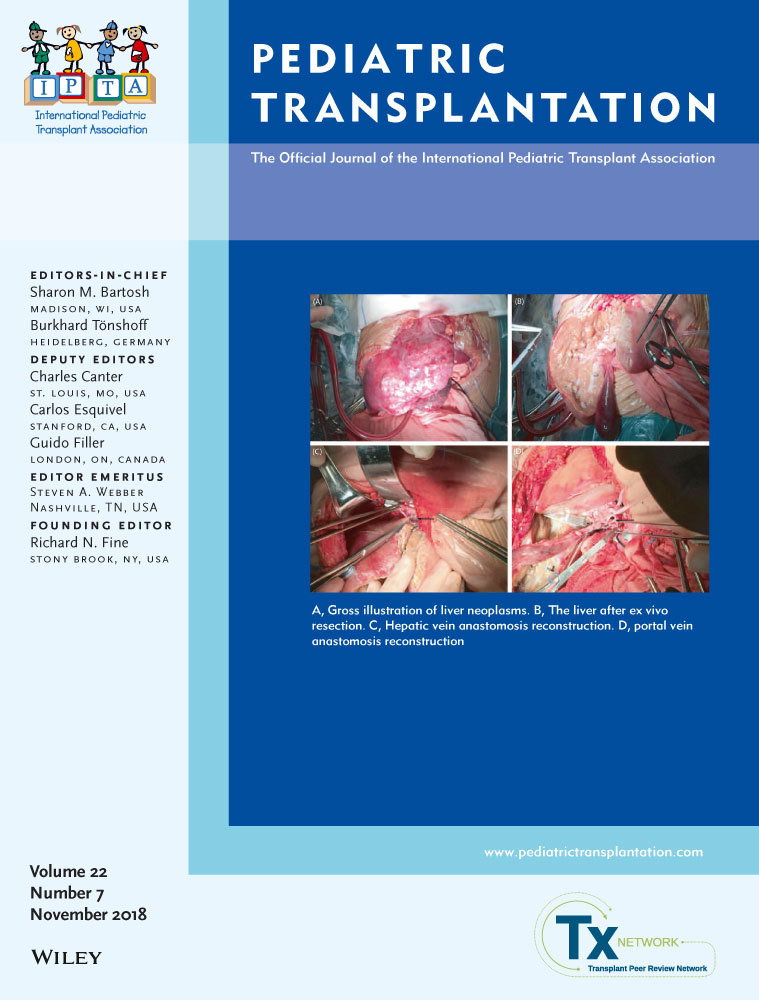Comparison in outcome with tailored antibiotic prophylaxis postoperatively in pediatric intestinal transplant population
Abstract
BIs are ubiquitous among the pediatric intestinal transplant patient population. Personalizing postoperative prophylaxis antibiotic regimens may improve outcomes in this population. A retrospective analysis of all pediatric patients who underwent intestinal transplantation was evaluated to compare standardized and tailored regimens of antibiotics provided as prophylaxis postoperatively. Patients in the standard group have both shorter time to and higher rate of BIs, which was statistically significant (P < 0.001). Of the children who developed a BI, there was no statistical difference in average times to the development of a second BI (293 vs 119 days, P = 0.211). The tailored group had prolonged times until the development of a MDRO (52.6 vs 63.9 days, P = 0.677). Although not statistically significant, the tailored group had a propensity to present with gram-negative pathogens after transplant as compared to the standard regimen group, which presented with gram-positive pathogens (P = 0.103). Children with a history of an MDRO held a 7.3 (P < 0.01) times more likelihood of death within a year of transplant. A tailored prophylactic antibiotic regimen in the post-transplant period appears to prolong the time to the first BI. Although the data do not show differences in mortality, further study may prove the impact of a tailored antibiotic regimen on morbidity and mortality rates.




